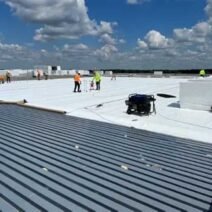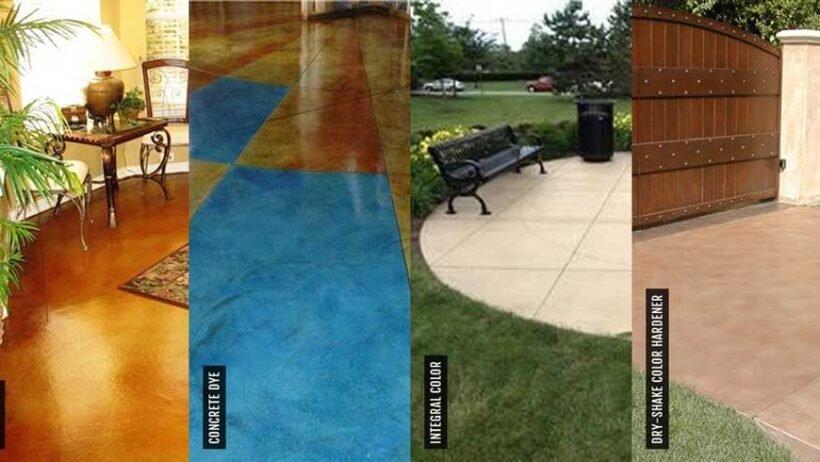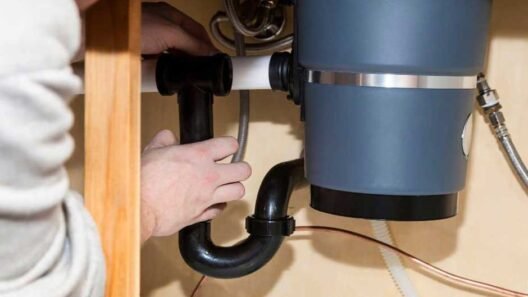When updating your home or outdoor space, staining concrete can be a cost-effective way to transform dull gray surfaces into beautiful, customized finishes that enhance your property’s aesthetic appeal. But what are the best concrete stains and dyes for decorative projects?
The most reliable concrete stains for decorative projects are acid-based stains like Kemiko Stone Tone and water-based stains like Smith Color Floor. For concrete dyes, Ameripolish SureLock and NewLook SmartColor are top industry choices due to their durability and color consistency.
While these products are considered industry standards, your specific project requirements might call for different solutions. The rest of this article will explore various factors that influence stain selection – from surface preparation requirements to indoor versus outdoor applications – helping you make the best choice for your unique situation.
How Do You Choose Between Acid Stains And Water-Based Stains?
Water-based stains, on the other hand, act more like paint, coating the surface rather than reacting with it. They come in a wider range of colors, including bright hues, and are easier to apply. They’re ideal for indoor projects and situations where precise color matching is important, though they may not be as durable as acid stains in extreme conditions.
What Surface Preparation Is Required For Concrete Staining?
Proper surface preparation is crucial for successful staining. The concrete must be completely clean, which requires the right concrete stain supplies, such as degreasers, etchers, or a pressure washer. It must be free of sealers, paint, adhesives, or other coatings, which may require grinding the surface before you can begin. Any repairs or patching should be done before staining, as these areas may accept stain differently than the surrounding concrete.
Testing the concrete’s porosity is also essential. A simple water drop test can determine if the concrete will accept stain – if water beads up instead of absorbing, additional preparation is needed. Most professionals recommend waiting at least 28 days after concrete placement before staining to ensure proper curing.
How Do You Maintain Stained Concrete Over Time?
Regular maintenance is key to preserving the beauty of stained concrete. Daily sweeping or dust mopping prevents abrasive particles from scratching the surface. For deeper cleaning, use pH-neutral cleaners specifically designed for decorative concrete – harsh chemicals can damage the stain or sealer.
Resealing is typically needed every 2-3 years for exterior surfaces and 3-5 years for interior floors, depending on traffic and exposure. Watch for signs of wear like dulling or water absorption, which indicate it’s time to reseal. Some areas may need more frequent maintenance, particularly those exposed to harsh weather or heavy foot traffic.
What Are The Most Common Problems With Concrete Staining And How Can You Avoid Them?
Color inconsistency is one of the biggest challenges in concrete staining. This can occur due to variations in the concrete’s composition, age, or previous exposure to chemicals. To minimize this risk, always test the stain on a small, inconspicuous area first. Additionally, ensure even application by using proper techniques like spraying in a circular motion and maintaining consistent coverage.
Another common issue is efflorescence – white, powdery deposits that can appear on concrete surfaces. This occurs when moisture carries dissolved salts to the surface. Proper drainage, adequate curing time, and using breathable sealers can help prevent efflorescence. If it does occur, it can usually be removed with specialized cleaners before staining.
How Much Does Professional Concrete Staining Cost Compared To DIY?
Professional concrete staining typically costs between $2-8 per square foot, depending on the complexity of the design, type of stain used, and local labor rates. This usually includes surface preparation, staining, and sealing. More intricate patterns or multiple colors can push costs toward $15 per square foot or higher.
DIY concrete staining materials generally cost $0.50-3 per square foot, making it significantly cheaper than professional installation. However, the learning curve can be steep, and mistakes can be costly to fix. When deciding between DIY and professional installation, consider factors like project size, desired outcome, and your comfort level with potentially challenging techniques. For simple, single-color applications in small areas, DIY can be a viable option, while complex designs or large spaces often benefit from professional expertise.
Taking The Next Step With Your Concrete Project
Before purchasing any stains or supplies, take time to create test patches on an inconspicuous area of your concrete surface using different stain options you’re considering. This small investment of time and materials will help you visualize the final result and avoid potential disappointment or costly mistakes on your full project. Remember that different sections of your concrete may accept stain differently, so testing in multiple spots is ideal.








